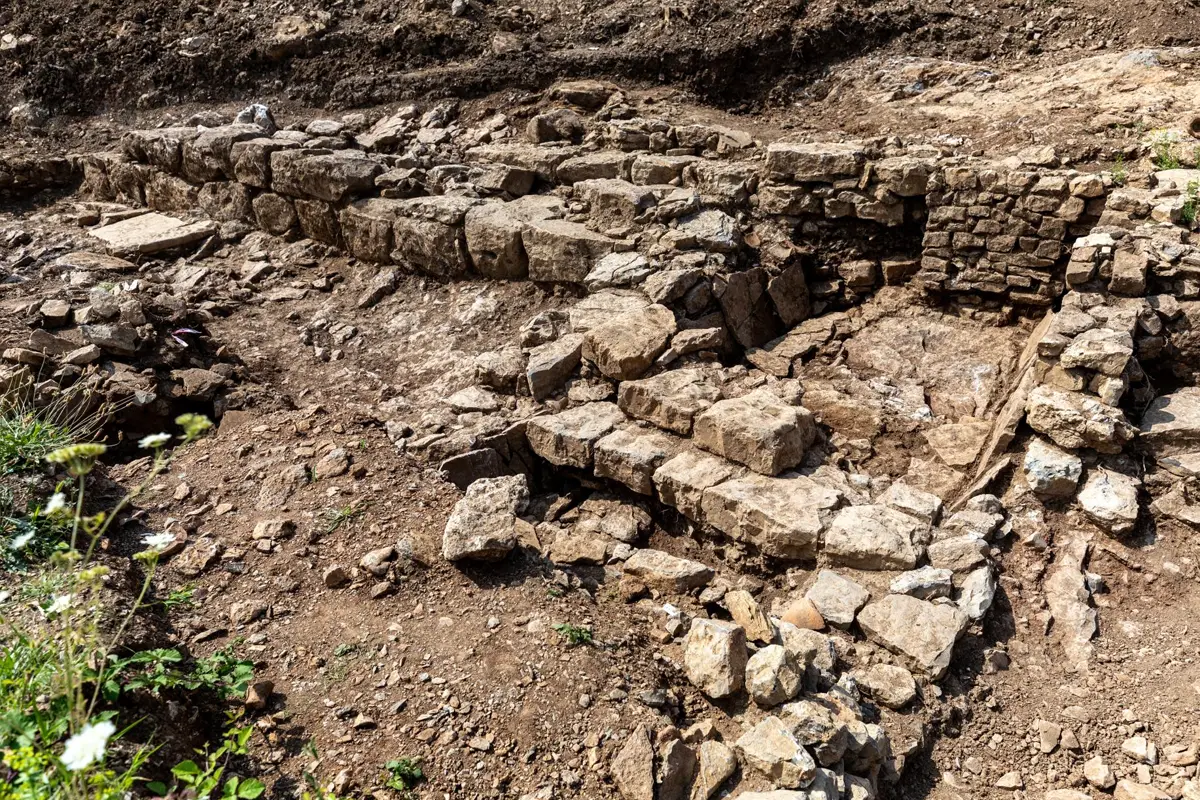Archaeologists from Inrap (France’s National Institute for Preventive Archaeological Research) have uncovered a stunning Roman-era settlement during excavations on the Hermitage hill overlooking Alès in southern France.
Conducted under the direction of the French Ministry of Culture (Drac Occitanie), the excavation explored a 3,750-square-metre area and revealed traces of uninterrupted habitation spanning nearly five centuries—from the 2nd to the 6th century AD.
A Mosaic Masterpiece
Among the most striking finds is a vividly colored, polychrome mosaic floor, discovered in a 4.5 x 3.8 meter room believed to be part of a substantial Roman residence—possibly a domus, the kind of high-status urban home owned by wealthy families.
The mosaic features a complex geometric design in black and white, with additional tesserae painted in hues of deep red, yellow, and purplish tones. Early analysis suggests the use of cinnabar, a rare and expensive mineral pigment in antiquity, highlighting the affluence and artistic sophistication of the inhabitants.
Adjacent to the mosaic, archaeologists uncovered white-tiled alcove-like spaces that may have supported furniture or served decorative functions. A striking border of white crosses set against a black background likely marked an entrance leading to another part of the home.
Layers of History and Innovation
The residence itself appears to have undergone multiple phases of architectural enhancement. Early floors were constructed from compacted earth, later replaced by lime-based concrete, and ultimately adorned with decorative mosaic elements—reflecting a clear evolution in taste, status, and technology.
One of the most ingenious features of the site is its ancient water management system. Excavators revealed a drainage conduit composed of interlocking fragments of amphorae, carefully laid to direct rainwater away from the building’s foundation—a practical and elegant solution to a timeless architectural challenge.
Sophisticated Roman Engineering
Elsewhere on the site, four dwellings partially carved into the limestone bedrock further demonstrate the advanced engineering techniques employed by Roman builders. Their walls were sealed with clay to prevent water infiltration, and terracotta pipe systems helped drain excess moisture—hallmarks of Roman ingenuity and attention to comfort.
A Glimpse into Late Antiquity
To the south of the site, archaeologists uncovered a small burial ground dating from the mid-5th to late 6th century AD. Ten west-oriented graves, likely used for wooden coffins, were found with few or no accompanying grave goods—a sign of changing funerary customs. Two additional isolated burials nearby suggest that the area continued to serve as a burial site well into Late Antiquity.
Preserving a Piece of Roman Legacy
This remarkable discovery offers invaluable insight into domestic life, architecture, and social evolution during a transformative period in Roman Gaul. As excavation and analysis continue, the site promises to shed further light on how communities in the region adapted across centuries of imperial rule and transition.








